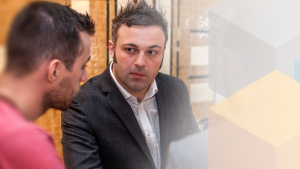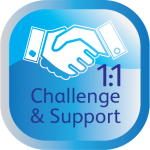
Great leaders are always in learning mode. Knowing what’s going on is your responsibility, and if something goes seriously wrong, you always wish you had received information to prevent it.
“Great leaders are always in learning mode. Can you always know everything? No. Can you always learn more? Of course you can. That’s your job.”
For me, this next chapter in my summary of Lee Cockerell’s leadership strategies (Creating Magic), reinforces some of the points that he makes in “Break the mould” in that great leaders always need to be looking (and listening) to find out what’s going on, and then being brave enough to make changes as a result of what they learn.
Get out and about routinely
Walt Disney spent a great deal of time walking Disneyland, talking with Guests and Cast Members alike. The Anaheim offices had no air conditioning so people would be out and about in the Park, rather than cool and comfortable but out of touch. Once a week leaders were expected to park where the guests park, eat where they eat etc.
Lee made sure his leaders walked Cast and Guest areas several times a day. He emphasises this point throughout this chapter – get out and about regularly.
Get a ground level view
As much as possible, experience the organisation as a Guest would. Lee would often dress like a guest and take his grandchildren around the Park, so that he got to see the operation from the guest’s perspective.
Meet regularly with direct reports
Holding one-to-ones with employees on a frequent basis is a key tenet of Lee’s leadership principles. He recommends organising conversations around four Ps – people, processes, projects and profits (and in that order!)
- People – have your team members update you on their direct reports. Asked who the promising leaders of tomorrow are and how they’re being developed for these next roles? Also find out who’s not performing well and what’s been done to get them back on track.
- Processes – have them explain what process changes they are working on to improve employee and guest experiences.
- Projects – Ask them what prescribed initiatives they’re working on to upgrade the products and services they’re responsible for.
- Profits – require them to give you a full report on their financial responsibilities, including sales figures, cost controls and emerging problems. The key here is that they do this, not you! (I couldn’t agree more with Lee on this one).
 Too often, people forgot who has ownership for the one-to-one – the preparation and the follow-up belong in the court of the team member, not the line manager. Of course, managers need to do their prep too and deliver on any commitments they have. But accountability must lie with the person whose one-to-one it is.
Too often, people forgot who has ownership for the one-to-one – the preparation and the follow-up belong in the court of the team member, not the line manager. Of course, managers need to do their prep too and deliver on any commitments they have. But accountability must lie with the person whose one-to-one it is.
Lee provides a great tip here on the location of such meetings: “I usually met with my direct reports in their offices, not mine. You can learn an awful lot by scanning the physical layout, watching people interact, and chatting with employees.”
Assemble small groups
Groups of 10 to 12 are a good number; ensuring a diversity of views while remaining intimate enough for everyone to feel relaxed and have time to speak.
Lee phrases his questions in such a way that they knew he wanted to help them do their job is better, not find fault with their performance.
One of his favourite questions was: “What happens on your job that makes you want to quit?”
Make them feel safe
Ensure there are confidential ways for people to communicate concerns and problems that they might not wish to say face-to-face.
The most effective way to make people comfortable in sharing difficult feedback, is to ensure you respond to it in an effective and professional way. Getting defensive, going on a witch-hunt or summarily dismissing feedback, are among the fastest ways to ensure you get less and less feedback and honesty from others.
Probe for the whole story
Rarely do people tell you everything. As Lee reminds us: “Think back to when you were a teenager; did you tell your parents everything?”
Ask questions that reassure the other person that you just want the facts and to get to the bottom of the issue. It’s not personal!
Look out for subtle clues in body language and dig deeper to get to the truth.
Once you believe you understand the history and context of the issue, look to the future. Ask: “What would you like me to do about this?”
Whatever the persons response, make sure you’re clear about what steps, if any, you’re going to take next and ALWAYS follow through.
 Answer the tough questions
Answer the tough questions
Remember a leader’s job is not just to ask tough questions, but also to answer them. Do what smart public figures do before they hold press conferences: anticipate the toughest questions, prepare the answers and mentally rehearse them.
Avoid using formulas and clichés, they make you sound insincere even if you’re not.
Don’t pretend to know something you don’t. The answer that builds the most trust is: “I don’t know, but I’ll get back to you on that.”
In 2004, Lee talks about a session he conducted at a leadership conference which he entitled: “The top 10 questions you wish people would not ask you.”
In fact, he took the top 20 and answered them both at the conference and later in the Main Street Diary (the weekly communications newsletter that he used in Walt Disney World). The answers interested people, but the real lesson was openness and frankness, which further built trust with people (even if they didn’t like the answers, they respected him for asking and answering these questions).
![]()
Get feedback about yourself
Proactively seek for feedback (using company 360-degree feedback processes) or by simply asking stop/start/continue questions (as described in an earlier blog post).
This is useful only if you intend to do something with the information.
Constantly evaluate your spending
Review what you and your team/dept are spending money on to determine if there was added value in doing so?
If you need to cut costs or identify ways to be more productive/effective, look to your frontline teams for ideas. But don’t wait for a crisis to emerge to ask your teams for their ideas. Each year, Disney teams were tasked for ideas for how to reduce their budgets by 1-3%, with the only rule being that it must NOT adversely impact on the Guest experience.
Lee describes in this section some simple and easy to execute ways that leaders (at all levels) should proactively find out what’s happening in their organisation, with their teams and with their guests.
As Lee puts it: “The truth is out there” so, “go find it.”
Podcast: Play in new window | Download


